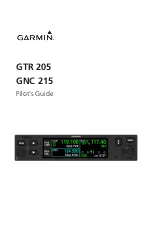
www.javad.com
61
Stake Out Alignments
Horizontal alignment consists of
sections
, each sec-
tion can be:
•
Straight line
— characterized by length and di-
rection (azimuth/bearing)
•
Circular arc
— characterized by radius, start/end
direction, arc length
•
Transition curve
— a curve connecting two sec-
tions of different curvature (two arcs, or a straight
line and an arc), implemented as clothoid (Euler
spiral); is characterized by start/end radius, start
direction and curve length.
A special type of section is starting point, which de-
fines reference point of the alignment (all other sec-
tions can be specified by relative position only, mak-
ing moving of the whole geometry easy).
When the horizontal alignment has been entered, al-
most each point on horizontal plane can be assigned
a pair of coordinates relative to the alignment — sta-
tion value along the alignment, corresponding to the
nearest curve point, and offset across the alignment.
Looking in the direction of station value growth along
the alignment, offset is considered positive to the
right and negative to the left of the alignment.
If, for the given plane point, the nearest alignment
point is cusp vertex (that is, there is no perpendicular
from the given point to alignment), such point is con-
sidered having only corresponding station value and
unsigned distance to the alignment, instead of signed
offset.
Vertical Alignment
— definition of the alignment
centerline elevation, setting it as a function of station
value (length along the
horizontal
curve). The vertical
alignment may be absent at all, or if present, does not
necessarily have endpoints equal to those of the hor-
izontal alignment. Points on horizontal alignment not
covered by vertical alignment are, in current imple-
mentation, considered to have zero elevation.
Vertical alignment also consists of sections (section
endpoints are not related to horizontal section end-
points). Each section can be:
•
Slope (straight line)
— characterized by
horizon-
tal
length and constant grade
•
Parabolic curve
— part of parabola defined by
horizontal
length and grades (vertical angles) at
start and end
Much like horizontal alignment, vertical alignment
also starts from special section “Starting point” speci-
fying starting elevation and station value.
Cross-Sections
— definitions of alignment geome-
try in vertical plane perpendicular to the alignment.
Cross-sections can be specified at arbitrary station
values along the alignment. Then, at each alignment
point, cross-section is either computed as linear inter-
polation of nearest previous and nearest next input
cross-sections, or is considered to be equal to the
last cross-section, if the point is after the latter on the
alignment. All cross-sections for one alignment have
the same number of segments.
Offset Points
- arbitrary points, which at time of
alignment key-in are specified by station and offset
Содержание TRIUMPH-LS
Страница 1: ...U S E R S G U I D E TO T H E T R I U M P H L S E Version 20160121 ...
Страница 17: ...www javad com 17 Introduction ...
Страница 39: ...www javad com 39 Collect Screens ...
Страница 59: ...www javad com 59 Stake Out Points ...
Страница 91: ...www javad com 91 Stake Out Alignments ...
Страница 93: ...www javad com 93 Using ShapeTags and Codes Data Structure ...
Страница 105: ...www javad com 105 Using ShapeTags and Codes ...
Страница 149: ...www javad com 149 Localization ...
Страница 165: ...www javad com 165 Appendix B NGS AntCal Appendix B NGS AntCal Data http www ngs noaa gov ANTCAL Antennas jsp manu Javad ...
Страница 166: ...www javad com 166 Appendix B NGS AntCal Appendix B NGS AntCal Data http www ngs noaa gov ANTCAL ...















































